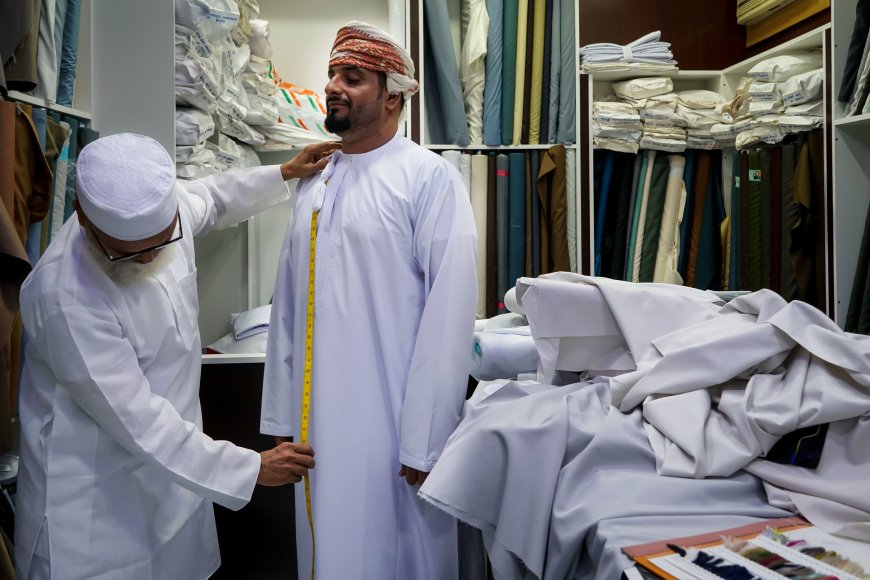A Closer Look at the Design and Embroidery of the Omani Thobe

Step into the world of Omani culture and fashion as we explore the intricate design and stunning embroidery of the traditional Omani Thobe. From vibrant colors to meticulous stitching, these garments are a true work of art that showcase the rich history and heritage of Oman. Join us as we take a closer look at the craftsmanship behind these beautiful pieces and discover why they have become a symbol of elegance and tradition in Omani society.
Introduction to the Omani Thobe and its significance in Omani culture
The Omani Thobe is a traditional garment that holds great significance in the culture of Oman. It is a long, loose-fitting robe-like garment worn by both men and women in various styles and designs. The thobe is considered to be the national dress of Oman and has been an integral part of the country's cultural identity for centuries.
Design and Style
The design of the Omani Thobe varies depending on gender and occasion. For men, it typically consists of a long-sleeved ankle-length garment with a collarless neckline called "mandarin" style. The sleeves are wide and loose-fitting, providing ventilation in hot climates. On the other hand, women's thobes have tighter sleeves with decorative embroidery along the seams.
Significance in Omani Culture
The Omani Thobe holds immense cultural significance in Oman as it represents their rich heritage and traditions. It is worn on special occasions such as weddings, religious ceremonies, festivals, and other important events. In fact, many families have passed down their thobes through generations as heirlooms.
Embroidery and Symbolism
One of the most distinctive features of the Omani Thobe is its intricate embroidery. The designs are often inspired by nature, incorporating elements such as flowers, trees, and animals. Each region of Oman has its unique style of embroidery, making it easy to identify where someone comes from based on their thobe's design.
History and Evolution of the Omani Thobe design
The Omani Thobe is a traditional garment that holds a significant cultural and historical importance in Oman. It has been worn by both men and women for centuries, with different designs and styles evolving over time. In this section, we will delve into the history and evolution of the Omani Thobe design, tracing its roots to ancient times.
Traditional Embroidery Techniques used in creating the Omani Thobe
The Omani Thobe is a traditional garment worn by men in Oman. It is known for its intricate embroidery designs and patterns, which are an integral part of the cultural heritage of the country. The embroidery work on the Thobe is done using various techniques that have been passed down through generations.
Symbolism and Meaning behind the Embroidery Patterns
The embroidery patterns on the Omani Thobe are not just decorative elements, but they hold deep symbolism and meaning within the Omani culture. Every stitch, color, and motif has a story to tell and reflects the rich heritage of Oman.
Modern Adaptations and Innovations in Omani Thobe Design
In recent years, the traditional Omani thobe has undergone modern adaptations and innovations, reflecting the changing preferences and lifestyle of its wearers. These new designs and techniques have brought a fresh perspective to this age-old garment while still preserving its cultural significance.
The Role of Women in Embroidering the Omani Thobe
The Omani Thobe is not just a traditional garment in Oman, but it also holds a significant cultural and social value. The intricate embroidery on the thobe is an art form that has been passed down through generations of Omani women. In this section, we will delve deeper into the role of women in embroidering the Omani Thobe, and how their skills contribute to preserving this unique cultural heritage.
Cultural Significance and Importance of Preserving this Tradition
The Omani Thobe holds a significant cultural importance in the country's history and tradition. It is not just a garment, but a symbol of identity and pride for the Omani people. Throughout the centuries, it has been an integral part of their daily lives and special occasions, representing their rich heritage and customs.
Conclusion:
The Omani thobe is not just a traditional garment, but a reflection of the rich cultural heritage of Oman. Its intricate design and embroidery patterns have evolved over centuries, representing the country's history, beliefs, and lifestyle.

 officepowercom
officepowercom